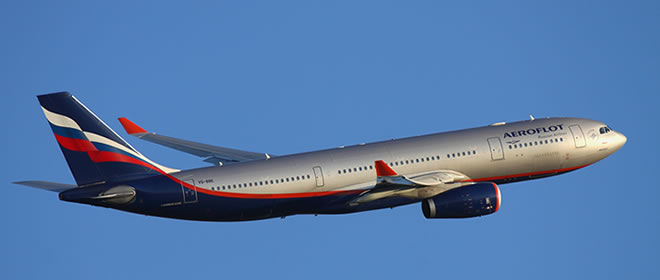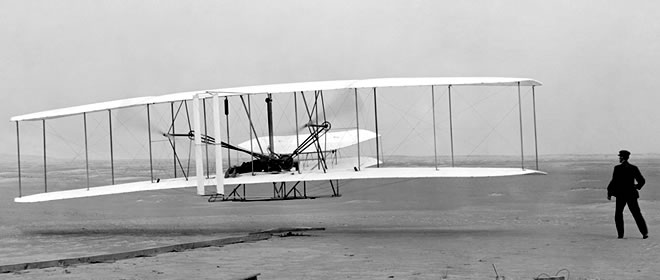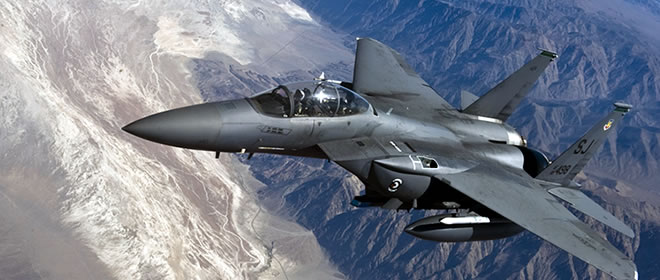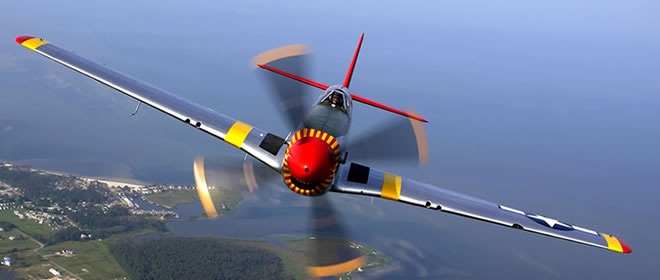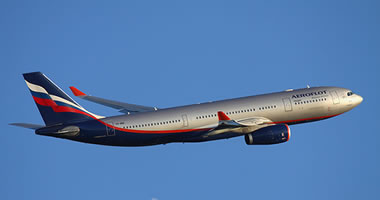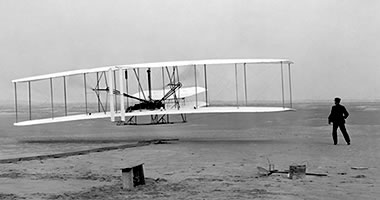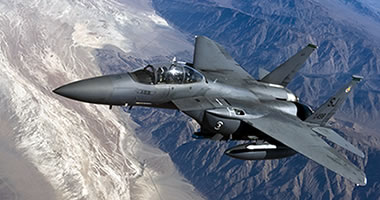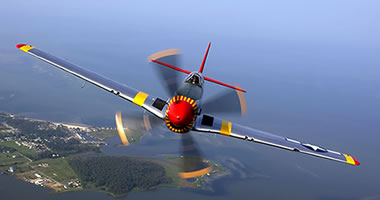US air bases in the UK after WW2
AUTHORS NOTE: To try and make a short precis of this subject is of course a devil of a job. Where do you start, and what to leave out for such a complex subject? Without any doubt, for the main points involving the height of the Cold War period, I believe the overview provided by Jim Wilson in his book 'Britain on the Brink' takes some beating, and accordingly after my introduction I have used his work to provide the structure of the main part of this article.
He certainly made me sit up and take notice, often explaining aspects that I had no previous knowledge of. Nevertheless this article is just my somewhat simplistic view, and by its very nature can only be a rough and ready introduction to the subject. I can only hope, despite the 'warts 'n all' which have to be part and parcel of such an article, that it might inspire some people to investigate the subject in greater depth.
THE START
Obviously the USA had a huge presence in the UK during WW2. They also knew that, with the Lend-Lease agreement, and other strategies, these could help to bring down the 'British Empire' and leave the way clear for U.S. domination of most of the world in many respects, both commercial, industrial and military. It hasn't exactly worked out of course, but such grandiose plans never do. The Americans, by and large, have little interest in reading and learning about history. Just look at what was happening in 2017 whilst this article was being written!
During WW2 many airfields were built solely for the use of the USAAF, (as the USAF was then known), although all were nominally 'owned' by the RAF as I understand it, even if they were built by American personnel. After all, they were placed on British sovereign territory - a point to be borne in mind.
It seems generally believed these days, that the underlying strategy behind the U.S. involvement in western Europe during WW2 was primarily intended to provide eventually, a route to put American 'boots on the ground' to prevent their main fear; the Soviet Union taking over western Europe. A part of the world which was already becoming a major market for American commercial interests, which it still is of course.
By the time the U.S.A. entered WW2 in the European theatre, the British had pretty much established that the war was over for Germany - with the thousand bomber raids, devastating raids on Hamburg etc. The 'Dam-busters' raid was a side-show, inflicting little if any lasting damage - but a huge PR success which, without much doubt helped convinced the U.S. to join in.
But, we also need to remember that the 'Battle of the Atlantic' was on the verge of being lost to the German U-boat threat, and indeed, that was a very close run affair. It was it appears a quite difficult job to convince the U.S. government that, if this battle did not succeed, the U.S.A. itself would then be under a dire threat from the Nazi regime.
SO WHAT HAPPENED AFTERWARDS?
I can highly recommend reading 'Britain on the Brink' by Jim Wilson, who certainly seems to have the scenario sorted out, and from which I will mainly quote.
"Protocols governing the US Air Force using British bases to launch nuclear war, date back to the summer of 1946. Shortly after the formation of America's Strategic Air Command in the wake of the Second World War, the Commander of the US Air Force, General Carl Spaatz, visited England to obtain permission in an emergency to use British bases for atomic bomb missions." Clearly he had in mind an attack on the Soviet Union, which of course at that time did not, (it appears?) have such weapons.
"He obtained the agreement of the Chief of Staff of the Royal Air Force, Air Chief Marshal, Lord Tedder, for five UK air bases to be available for B-29 bombers." The Boeing B-29 Superfortress was the type used to drop the atomic bombs on Hiroshima and Nagasaki. So it had 'form' so to speak - an established reputation.
I suppose this serves to illustrate how, at that period in time, the UK was virtually totally subserviant to American policies. "It was a deal struck by military officials with no public discussion and no political debate of the potentially serious implications for British sovereignty and political control. This secret administrative agreement, taken rather casually and without a written protocol, was the step in establishing US rights to base a nuclear strike force in the UK." It seems beyond belief does it not? We rolled over to have our tummy rubbed.
IT GOT GOING
"The following month assembly buildings and loading pits to enable the first generation of cumbersome American atomic bombs to be maintained and handled were installed at five UK bases. In June 1947 the first 'tours' to Europe by Strategic Air Command bombers began as an element of the command's mobility plan to enable America's nuclear strike force to operate from forward European bases." Although the UK was never any threat to the Soviet Union after WW2, we were now in it up to it to our necks by offering to support the U.S.A. And, it was going to cost us very dearly indeed - requiring the formation of our own atomic bomber force.
But, at the same time, the UK government highly relished the idea; as the British Empire was going down the drain, that by having a highly developed nuclear Strike Force, it gave them a position of influence at the 'high table' when it came to global affairs. It seemed to them a price worth paying, to put the UK into the front line to be exterminated first in a nuclear war with the Soviet Union . We would still have a major say in international political matters they thought - but we didn't. Nobody was much interested in the UK any more - it was all but finished as a 'global' military and political force.
THE RATHER ODD BUT AMAZING RESULT?
The somewhat incredible result, from a nation apparently starved of money and resources, was that the British aircraft industry then designed and built, not one but three bombers to deliver atomic weapons, which, in terms of performance and especially manouervreability left the U.S. and Soviet designs in the shade. These were the 'V' bombers, the Vickers Valiant, Avro Vulcan and Handley Page Victor - the latter being the last and least capable in aerobatic terms.
THE SOVIETS HELD THEIR NERVE
The rest of Europe, if not most of the world, looked on aghast as the U.S. put increasing pressure on the Soviet Union, in the early days trying very hard to make the Soviets break and declare war. But they held their nerve, knowing full well that the entire exercise was utterly futile, without anybody standing a chance of winning. And of course, in the end it was the Soviets that declared that an end to this hugely wasteful and utterly meaningless pretence, had to be finally resolved. This occurred under the leadership of Mikhail Gorbachev and his 'Glasnost' and 'Perestroika' initiatives, or programmes.
PRETTY MUCH PLAIN SAILING FOR THE USAF ALONG THE WAY?
"In June 1948, as Berlin became the focus of international attention with a Soviet blockade of land routes into the city, the US Ambassador in London asked if three groups of heavy bombers could be allowed to come to Britain as a temporary show of strength. A small cabinet committee agreed to the request."
"The British Cabinet might well have felt that a temporary presence at a time of tension was a reasonable move. However, privately the United States appears to have had long-term intentions from the start. Access to British bases was of critical importance to the US Strategic Air Command's fast developing plans for possible nuclear warfare. As the US Secretary of Defence, James Forrestal, wrote at the time: "We have the opportunity of sending these planes, and once sent, they would become somewhat of an accepted fixture."
He was quite correct - they did. From Jim Wilson; "Three bomb groups arrived at Marham, Waddington and Scampton for 'operational training'. They were due to stay for thirty days, but this period was extended to sixty days and when the first tranche of aeroplanes left they were replaced by other groups. A process of regular 'rotation' followed and became routine." One has to wonder if the British government had any idea about what was actually going on, and the answer appears to be - they hadn't a clue. Some people did though, but their protestations were dismissed.
INTO THE FRONT LINE REGARDLESS
Again from Jim Wilson: "So Britain, within convenient flying range of the Soviet Union became the ideal forward base for America. As the US secretary of defence had predicted, the arrangement became permanent and accepted. But the legacy of no unambiguous written agreement, as to the status and political control of American bases on British soil remained." It beggars belief does it not?
"Prime Minister, Clement Attlee's, Foreign Secretary, Ernest Bevin, was so concerned at the lack of a firm agreement which spelled out the terms on which the Americans were allowed to base nuclear forces in the UK, he insisted Britain must have the right to terminate arrangements if the British Government thought it was against Britain's national interests." He was quite right and doing a very good job of it - not that it mattered.
"He was also, not surprisingly , appalled at what the position would be if the US unilaterally chose to use British bases in circumstances where Britain itself was not at war, or if there was a disagreement between the two goverments on policy. The UK was sovereign territory. The British Government could not allow US offensive operations to be launched from its territory without UK government consent." I wonder what the legal position really was, when for example, the U.S. used the UK to bomb Libya by F-111Fs from LAKENHEATH on the 15th April 1986?
"There had been suggestions that the US ambassador had given Bevin the assurance he sought, that Britain would be consulted about any plans for the use of British bases in an operational capacity. But these assurances were not put into writing." Once again, this now seems quite incredible that such a very serious undertaking - placing the British public into the front-line of a nuclear war - was not the subject of any official document being prepared!
U.S. PLANS CONTINUE APACE
"In 1950, four further airfields were earmarked for use by Strategic Air Command; those at Greenham Common, Upper Heyford, Fairford and Brize Norton. This took place under an agreement which became known as 'The Ambassador's Agreement' because it was signed between the American ambassador to Britain and the British under-secretary for air. But the actual terms of the agreement remained secret."
Needless to say this stinks. Without much if any doubt, the U.S. military and the U.S. administration had, quite sensibly from their point of view, taken full advantage of having so many people based in the UK during WW2, to ensure that they had a considerable amount of 'agents' and/or sympathisers in place within the British administration at least, and well placed to influence events.
Looking back it is almost comical to see the ill-informed and 'kow-towing' British press and media being obsessed with exposing 'Reds-under-the-beds' spies working for the Soviet regime. And yet appearing to be quite unaware of how the USA were exploiting the British to further their aims.
THE SOVIETS NOW HAVE A NUCLEAR CAPABILITY
"The Soviet Union had, the previous year, announced it too was a nuclear power and the consequences of that were beginning to 'hit home' in the UK. There was now no doubt that Britain, as America's forward nuclear base would be first to be targeted in any exchange of nuclear weapons. There was no other way the Soviet Union could strike back against the US. It lacked both aircraft carriers and bombers of sufficient range to make a direct attack on North America. But Soviet nuclear bombers were perfectly capable of reaching Britain."
"The situation was also crystal clear to the American Government. The safety of the US depended on American nuclear capacity based in the UK. The US Air Force Secretary, Thomas K Finletter, sent a revealing top secret memorandum to the US secretary for defence on 7 July 1950. He wrote: "We are dependent at this moment almost entirely on the availability of UK bases for the launching of our strategic countermeasures. I haven't any real doubt that the British will come along if we do get engaged in war. But the question is when. I do not like at all the fact that we are almost entirely dependent on the UK.....I know the British well enough to know, that sometimes they can be very slow; and this strategic countermeasure is something which cannot afford to be held up while the British Cabinet is debating about things."
"The other side of the coin was expressed the same year by the British chief of air staff: 'The present situation', he wrote, 'whereby the United States could launch atomic bomb attacks on Russia making use of United Kingdom bases and facilities (without consultation) is intolerable."
VOICING FEARS
"Backbench MPs in Britain were beginning to voice fears that Britain might suffer annihilation without even prior consultation from the American Government, particularly following an overt threat from President Harry Truman to possibly use atomic weapons in the war that had broken out in Korea. In December 1952, Prime Minister Attlee went to Washington for urgent talks over nuclear threats."
"All he was able to achieve was a none-too-precise personal understanding between him and President Truman. Attlee had been keen to get a written agreement which would set out the exact terms under which bases on sovereign British soil could be used to launch a nuclear attack. He wanted very clearly defined the principle that the United States would not consider using their bases to launch nuclear-armed aircraft without first consulting the British Government."
"Before the Attlee-Truman talks no formal arrangements between the two goverments existed. Instead, as has been shown, there were only 'understandings' which were certainly not well defined and capable of ambiguous interpretation. "
Isn't this all very interesting indeed?
"Attlee found the Americans adamant that there would be no written agreement. President Harry Truman told the British Prime Minister: 'It will not be in writing, since if a man's word isn't any good, it isn't made any better by writing it down." Astonishing is it not? These are the words not of a statesman with global stature, but more the language employed by a dodgy second-hand car dealer.
Today it now seems reasonably clear that the combined U.S. government, administration and military forces had pretty much decided that after WW2 the UK was a spent force in world affairs. Which of course was one of their primary aims prior to and including getting involved on the European front in WW2. And indeed, they were by and large correct. WW2 had rendered the UK, to all intents and purposes - bankrupt. The majority of people in this 'so called' victorious nation not fairing much better than other nations in Europe, including Germany, with severe rationing imposed.
As an aside to illustrate the point, my brother-in-law then living near Doncaster, had an invite to visit a major U.S. base nearby. A relative had married an American sergeant in the USAF stationed on the base. He told me that they were astonished at the wealth and plentitude of commodities readily available, the American cars driving around and, to him, their luxurious living accommodation - they even had 'fridges' installed. He also made the point that those living nearby to a USAF base were seeing something of a boom time as the money spent by the American personnel was getting spilt out and spread around.
HARDLY A SATISFACTORY RESULT
"The only paragraph in the communique following the talks between the two men that touched upon the key issue read: 'The President stated that is was his hope that world conditions would never call for the use of the atomic bomb. The President told the Prime Minister that it was also his desire to keep the Prime Minister at all times informed of all developments which might bring about a change in the situation.' As Jim Wilson points out: "This was, of course, a long way from the certainty, spelt out in text, that Attlee wanted, which would have set down unequivocally that neither the US or UK would use nuclear weapons without prior consultation with each other; in other words an agreement which gave the UK a meaningful veto."
"Attlee, in a statement to parliament on 14 December 1950, gave the impression that his talks with the President had been perfectly satisfactory and he made no mention of the fact that the Americans had disputed the British understanding of the outcome, particularly over the vital question promising 'consultation'."
What this illustrates is that on both sides perhaps, and it seems certainly the case with the British government, there was a complete failure to appreciate the realities of a nuclear war. The game had changed, the old rules of war had gone forever. If for example the Soviet Union had launched a pre-emptive strike against the UK with atomic weapons, the notion that anybody would have the time for a cosy chat on a trans-Atlantic telephone link is utterly farcical. Indeed, unless the RAF had had enough time to launch all their fighters, (extremely unlikely), in time to shoot down all the Soviet bombers; it was pretty much the end of the UK - full stop!
What is really interesting, considering the various aspects of the 'Cold War', and what can never be known of course, is how the British 'V-bomber' force would have fared compared to the USAF aircraft in reeking retribution? Once the RAF went for the very low-level strategy, the RAF aircrews were very confident that quite a few would get through the Soviet defences, and they were perhaps proved correct, at least to some extent, when on the 28th May 1987 the inexperienced private pilot Mathias Rust flew the Cessna 172P D-ECJB from Helsinki to land in the centre of Moscow, not far from the Kremlin and Red Square.
But, the USAF never had a low-level capability (?) until the General Dynamics F-111 Aardvark appeared in 1967. However, it now seems that the F-111 didn't appear in England until 1977 (?). So, prior to 1977, unless the USAF had superior numbers of bombers, compared to the Soviet Union's ground-to-air missiles and fighter/interceptors, (which is surely highly unlikely?), the effectiveness of the USAF bases in the UK working as a practical deterrent would appear to be highly questionable?
A BLEAK PROSPECT
Once again from Jim Wilson: "An American assessment in the early 1950s suggested that the UK would be crippled by an attack in which forty atomic bombs were dropped. 120 would irrevocably destroy the country, and in a general war the American Strategic Air Command could not expect more than a few weeks use of its UK forward bases." This seems to suggest that the Americans had calculated that very few Soviet bombers would get through, and of course, that the Soviets would only use part of their air force in any specific attack.
But here comes the crunch: "Despite the UK's vulnerability as host to America's forward nuclear attack force, the security of the UK, the American planners added, must necessarily be a British primary responsibility." So, here we have UK nigh on bankrupt with the population on severe rationing, being expected to design and build a defence force capable of resisting a Soviet onslaught. Which of course is exactly what we did, to some extent at least as history teaches us that the deterrent worked. Indeed, if it hadn't there would be no history!
THE NUMBERS INVOLVED
This seems to be a subject never to be resolved. It appears that the U.S. had convinced themselves that the Soviets had amassed a huge force of bombers, and, as a consequence had built something like 2,500 bombers. I have failed to discover how many USAF bombers, or indeed fighters, have been based in the UK, but it was once a considerable number. It now appears that the U-2 spy missions, at the height of the 'Cold War' revealed that the Soviets only had around 100 to 200 long-range bombers and tankers. This it seems is now known as 'The Bomber Gap'.
A similar over-estimation of the Soviet's ability to manufacturer ICBMs (Inter-Continental Ballistic Missiles) now appears to exist. Once again, supported by spy missions flown by the Lockheed U-2, the evidence of huge numbers of ICBM launching sites failed to materialise. To cut a long story short, it always appears from the 'evidence' available, that the USA was always the aggressor in the 'Cold War', with a massive advantage of military might.
THE BRITISH CONTRIBUTION
At the height of the 'Cold War' around the mid-1960s, the RAF 'V' bomber force had 50 Vickers Valiants, 70 Avro Vulcans and 39 Handley Page Victors available - or so it seems. Plus 60 Douglas Thor missiles and with 783 Bristol Bloodhound ground-to-air missiles being built, a fair number of those must have been available. Likewise, with English Electric building over 300 Lightnings as interceptors.
So, incredible though it may seem, if the figures are correct (?), the RAF could have resisted an attack from the Soviets - on their own!
THE END IN SIGHT
After the 'Berlin Wall' came down in 1989, the departure of the USAF from the UK was incredibly swift. By the end of 1993, Bentwaters, Greenham Common, Sculthorpe, Upper Heyford, Wethersfield and Woodbridge had closed. The USAF air-transport and air-tanking base at Mildenhall was scheduled to close in 2016.
In fact it appears, the only USAF base operating aircraft in the UK, by 2017 would be Lakenheath, occupied by the 48th Fighter Wing. But why would the USAF want a 'fighter wing' based in the UK?
JUST A COMMENT
A few years ago I was working on a film job at Bentwaters. It seemed I was told, that the agreement was that after departing a base, the USAF had to restore the base to pristine condition, including resurfacing the runway, which they certainly did at Bentwaters, and all at considerable expense needless to say. As soon as the USAF moved out, the base was closed! One can only wonder at the mind-set of the British people involved. It was of course an act of breathtaking delinquency, and the Americans must have been furious.
Did this 'rule' apply at the other USAF bases?
But then of course, as is regularly rammed down our throats, the U.S.A. and Great Britain have 'A special relationship'. Something we are supposed to appreciate!

